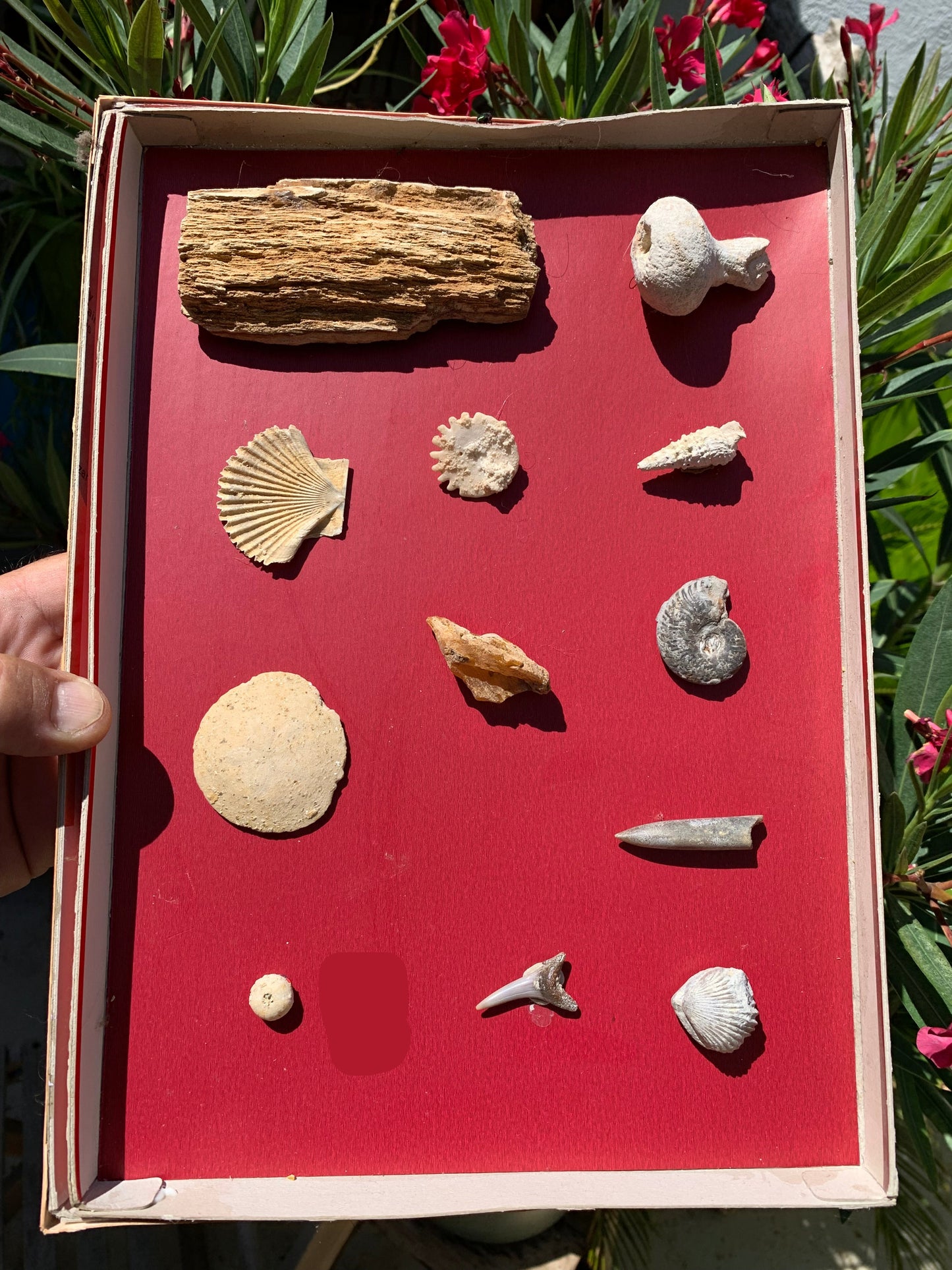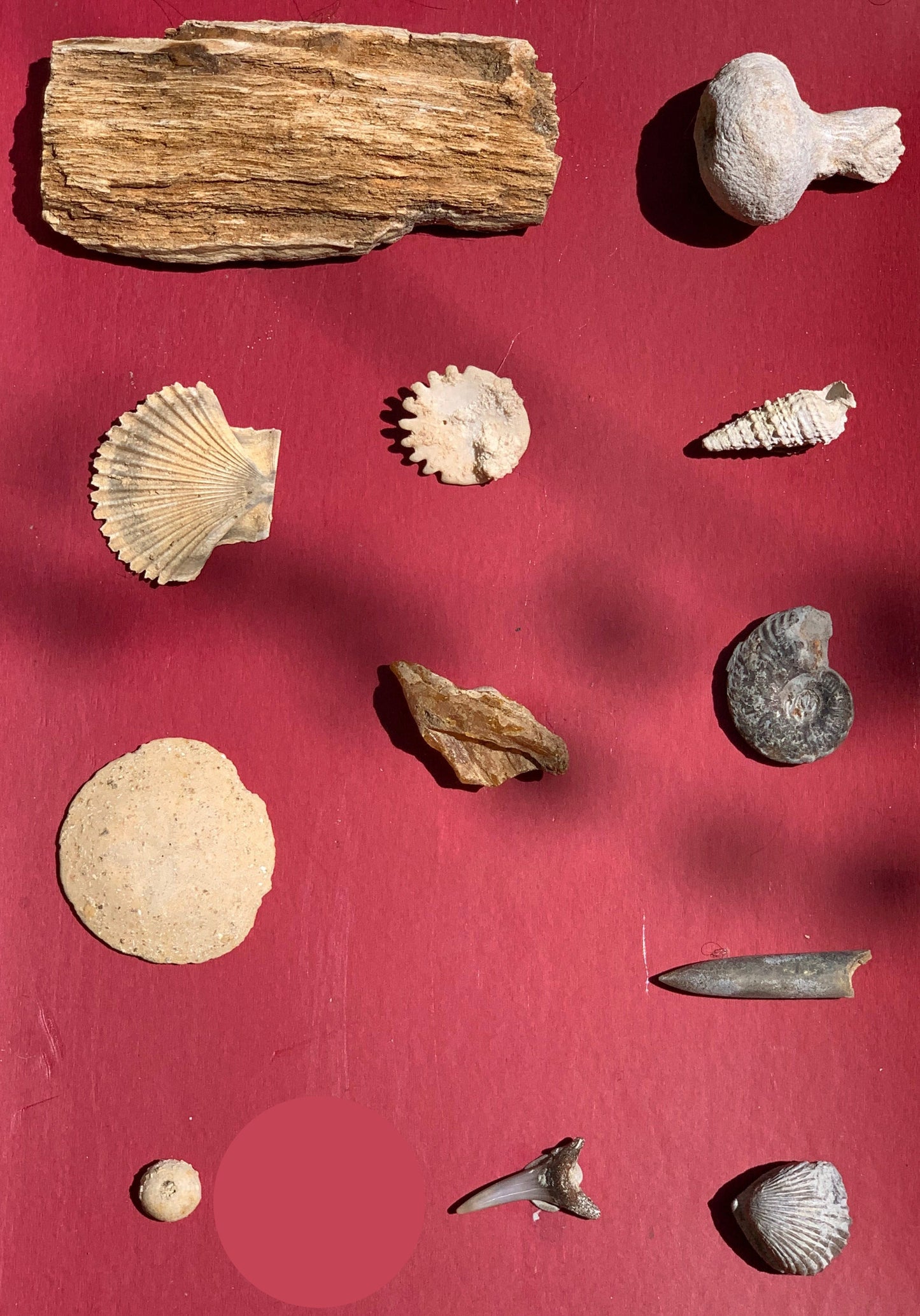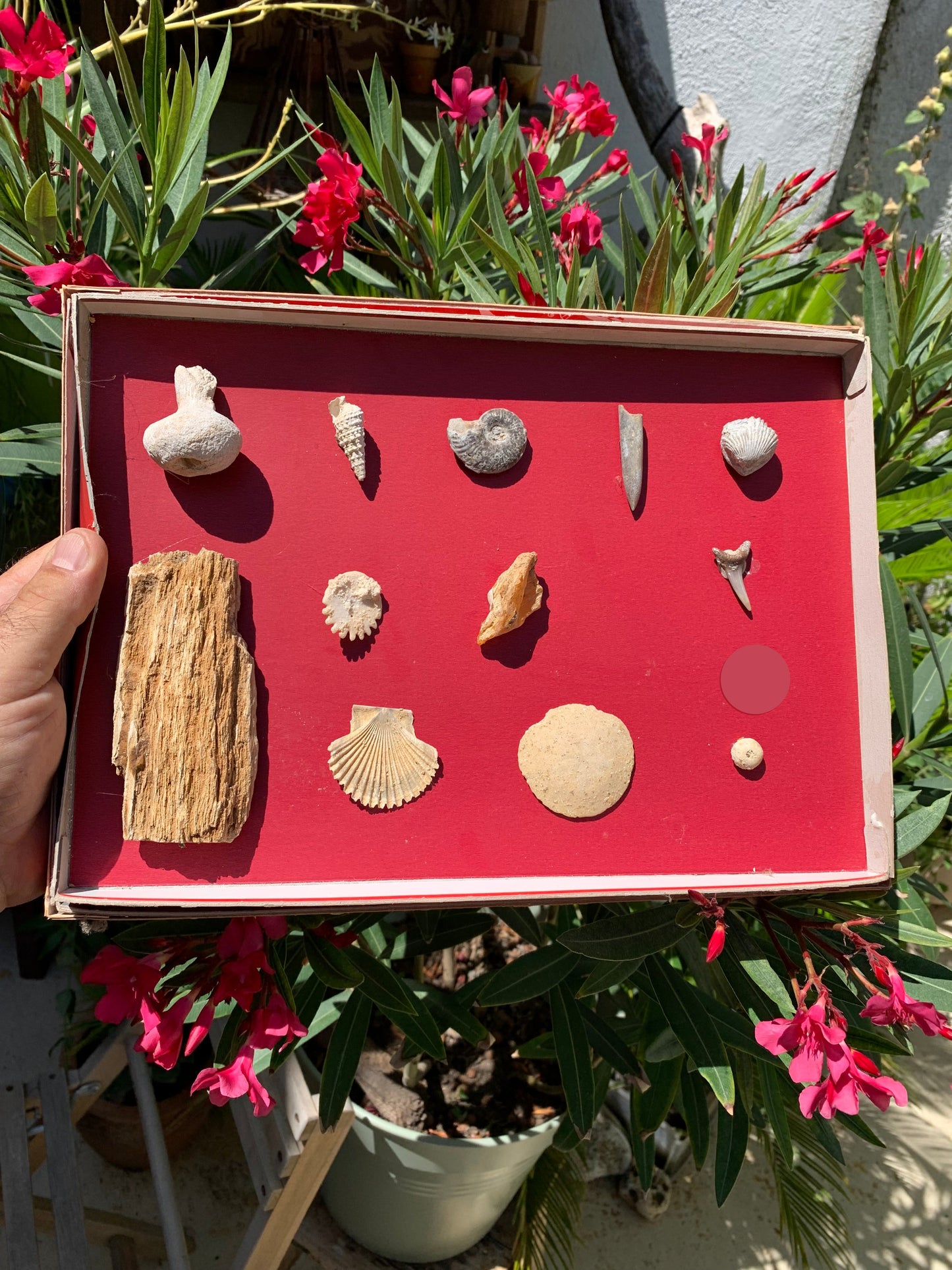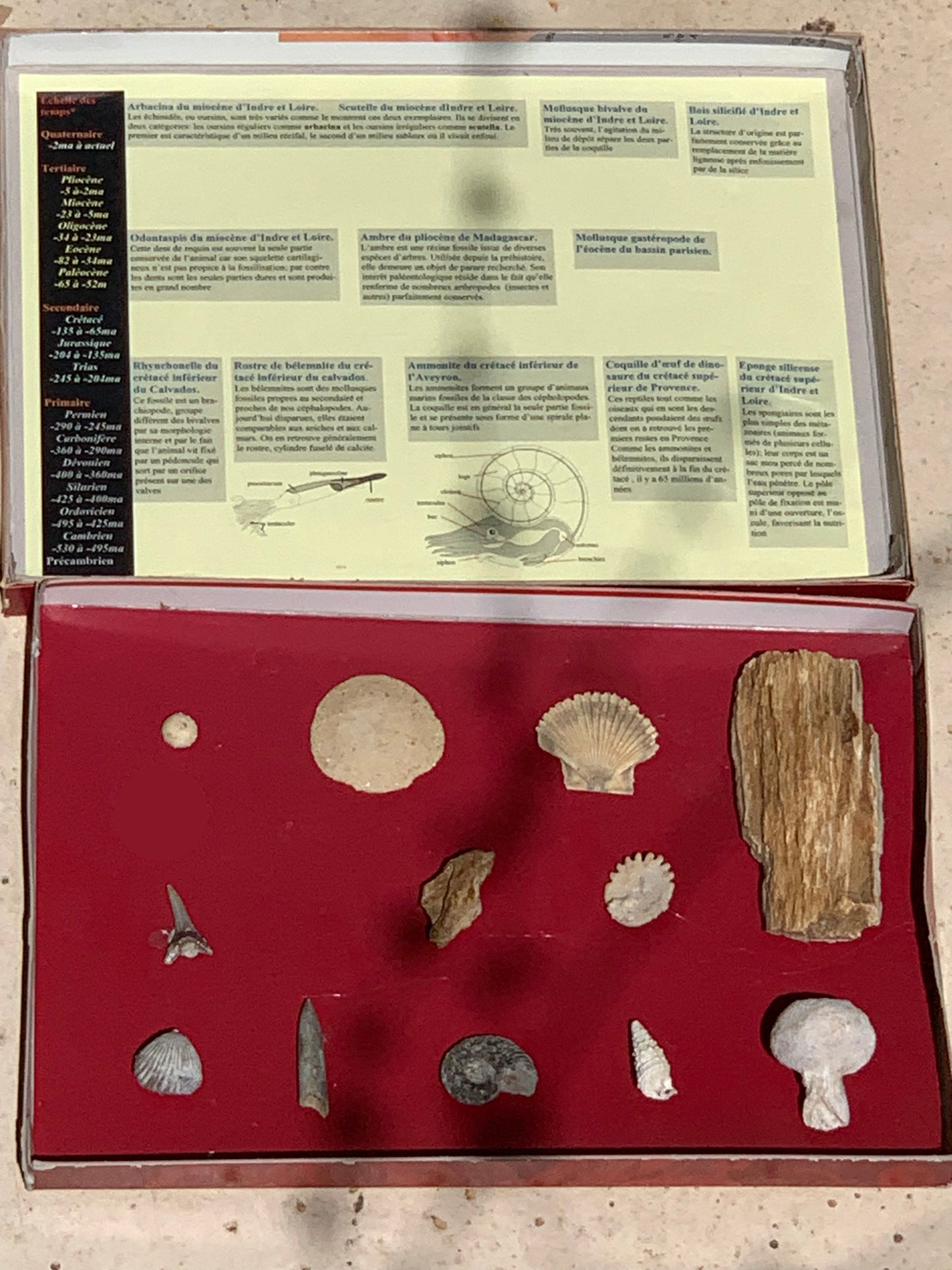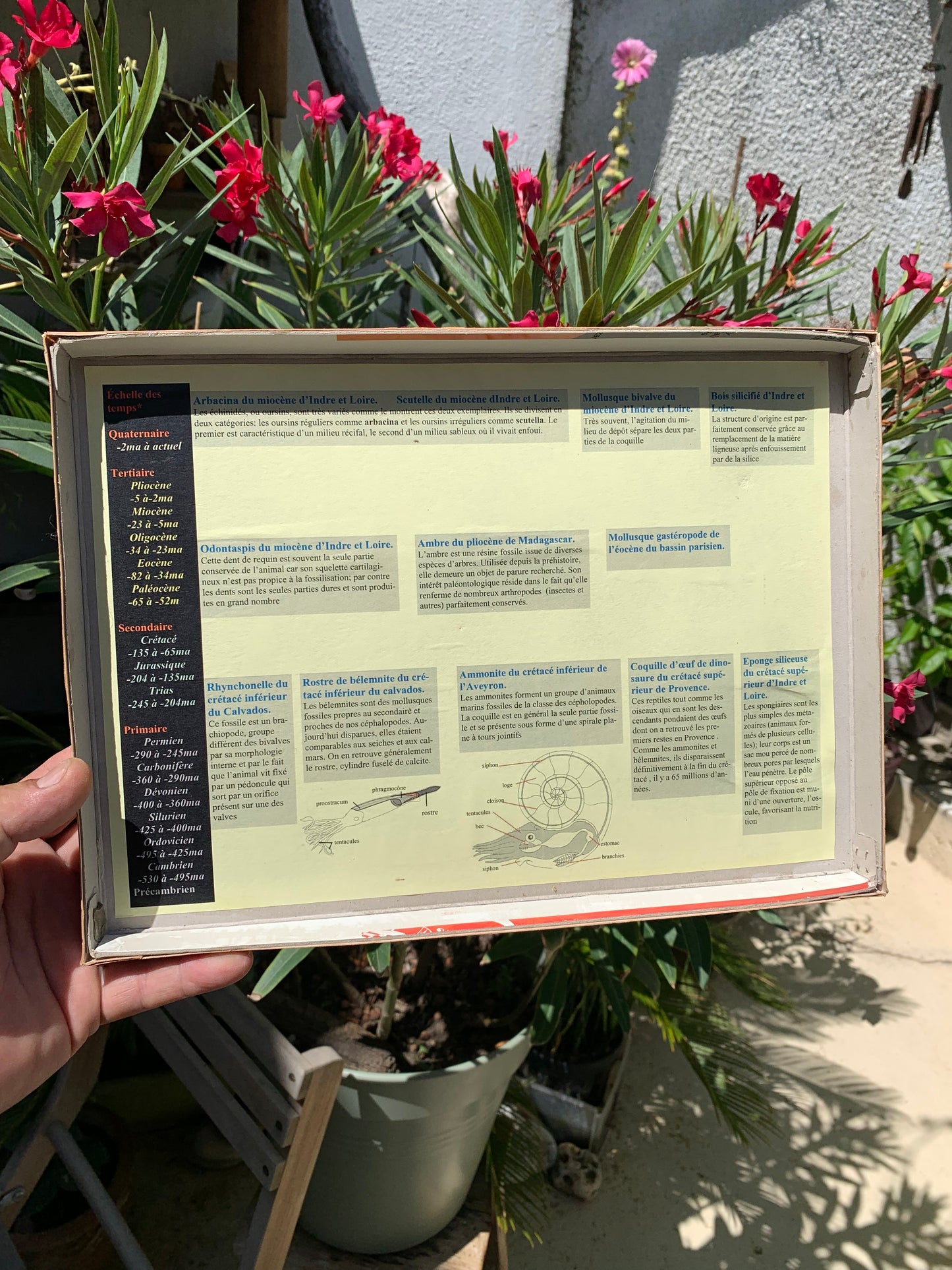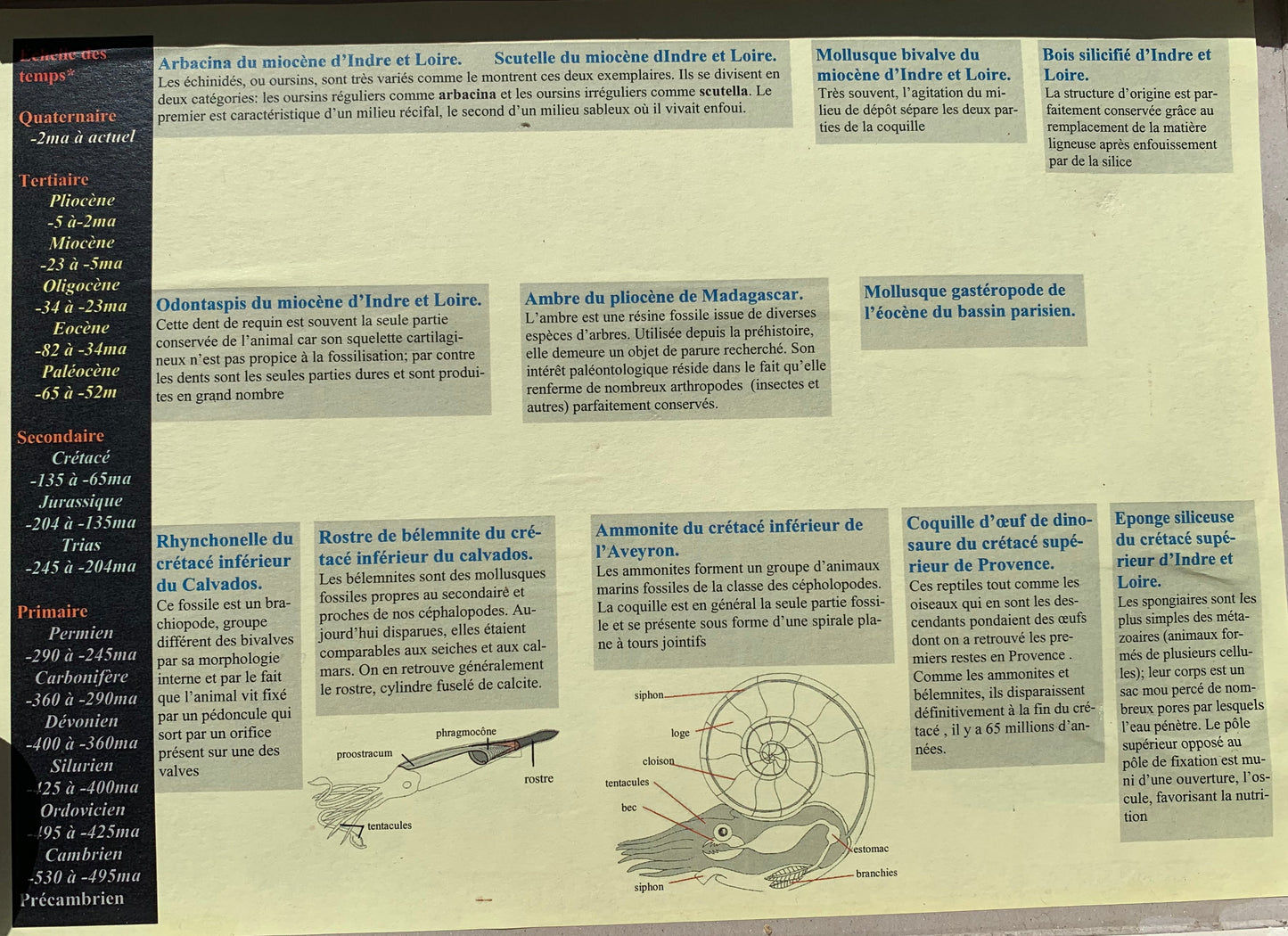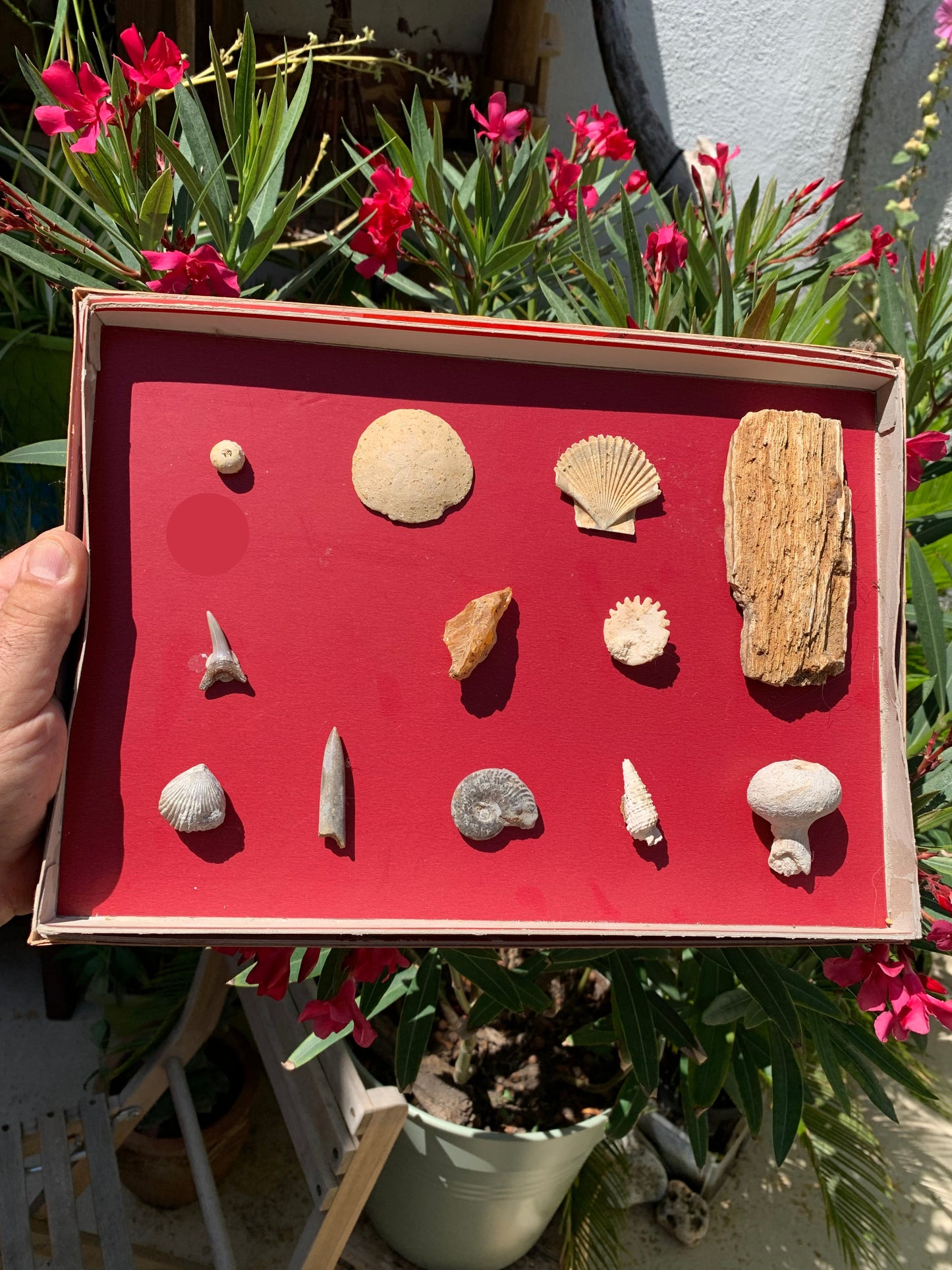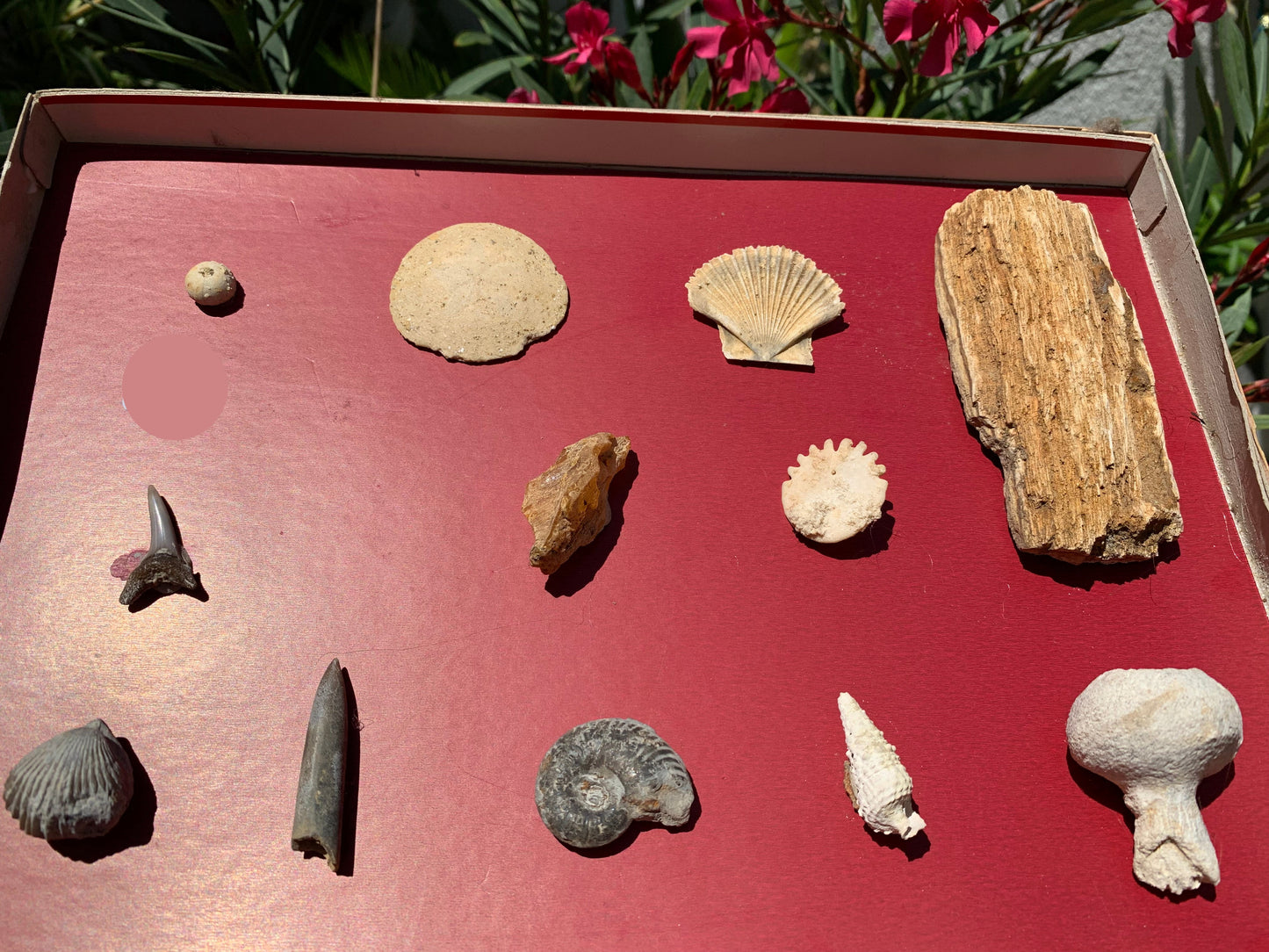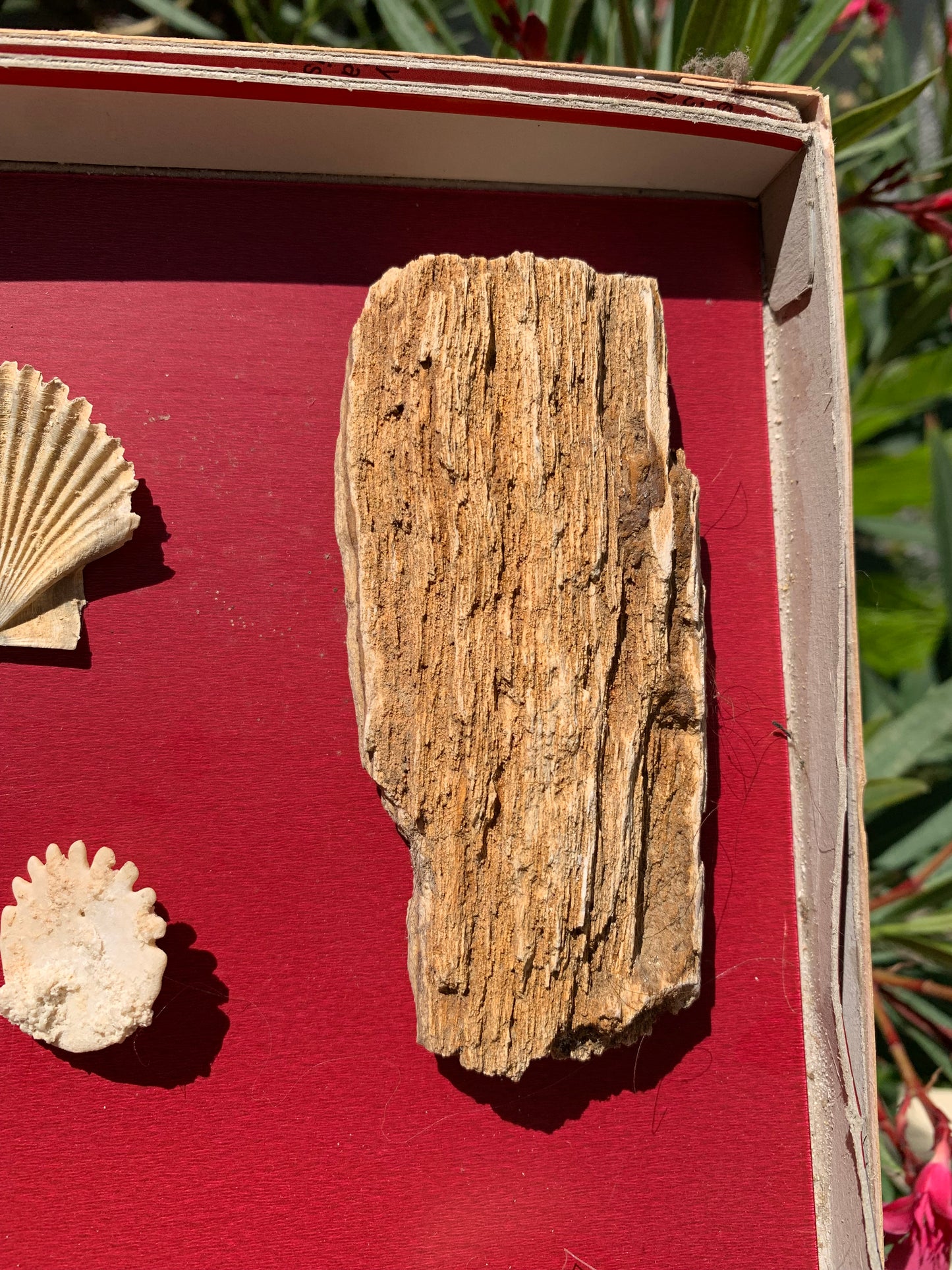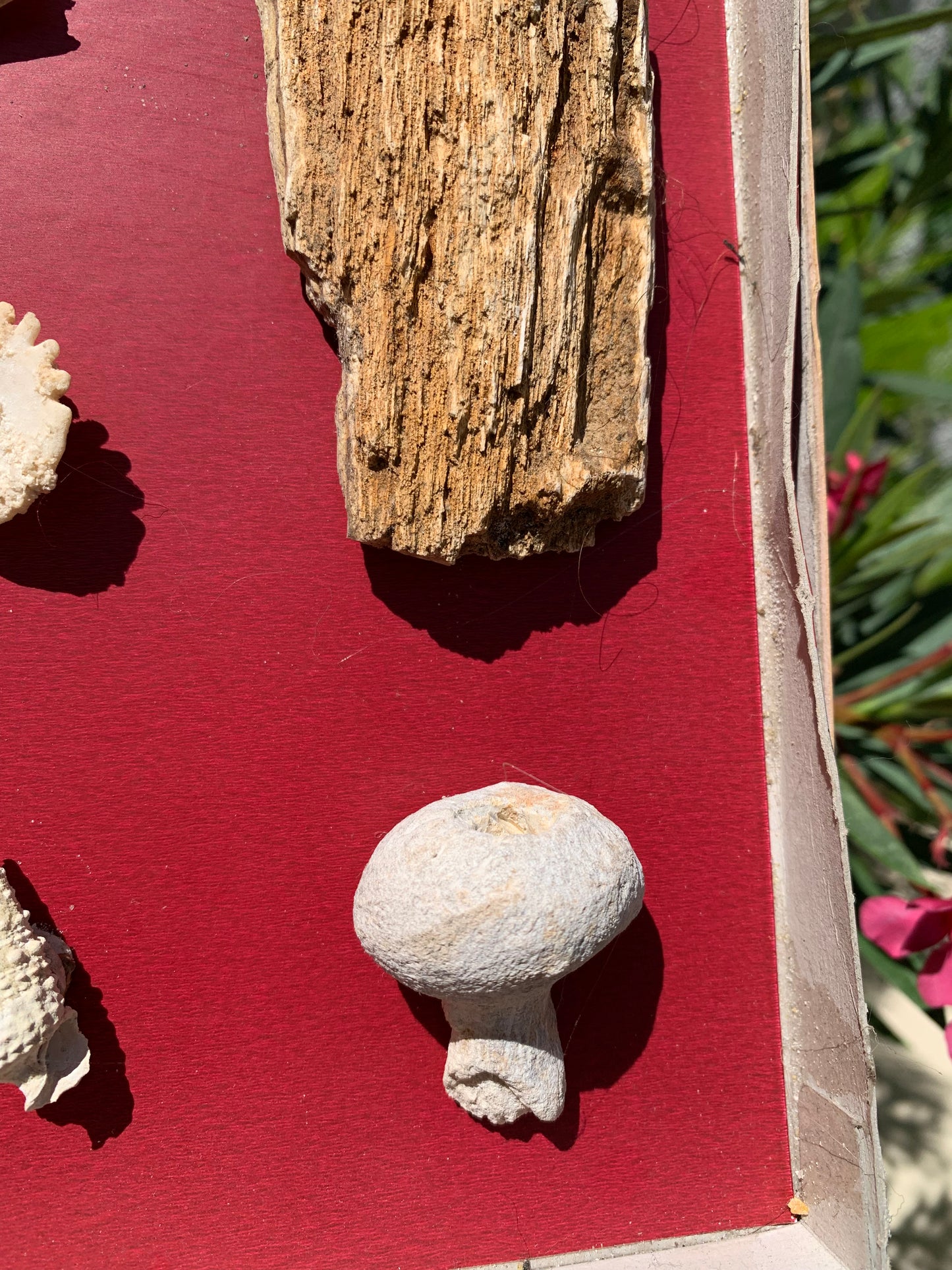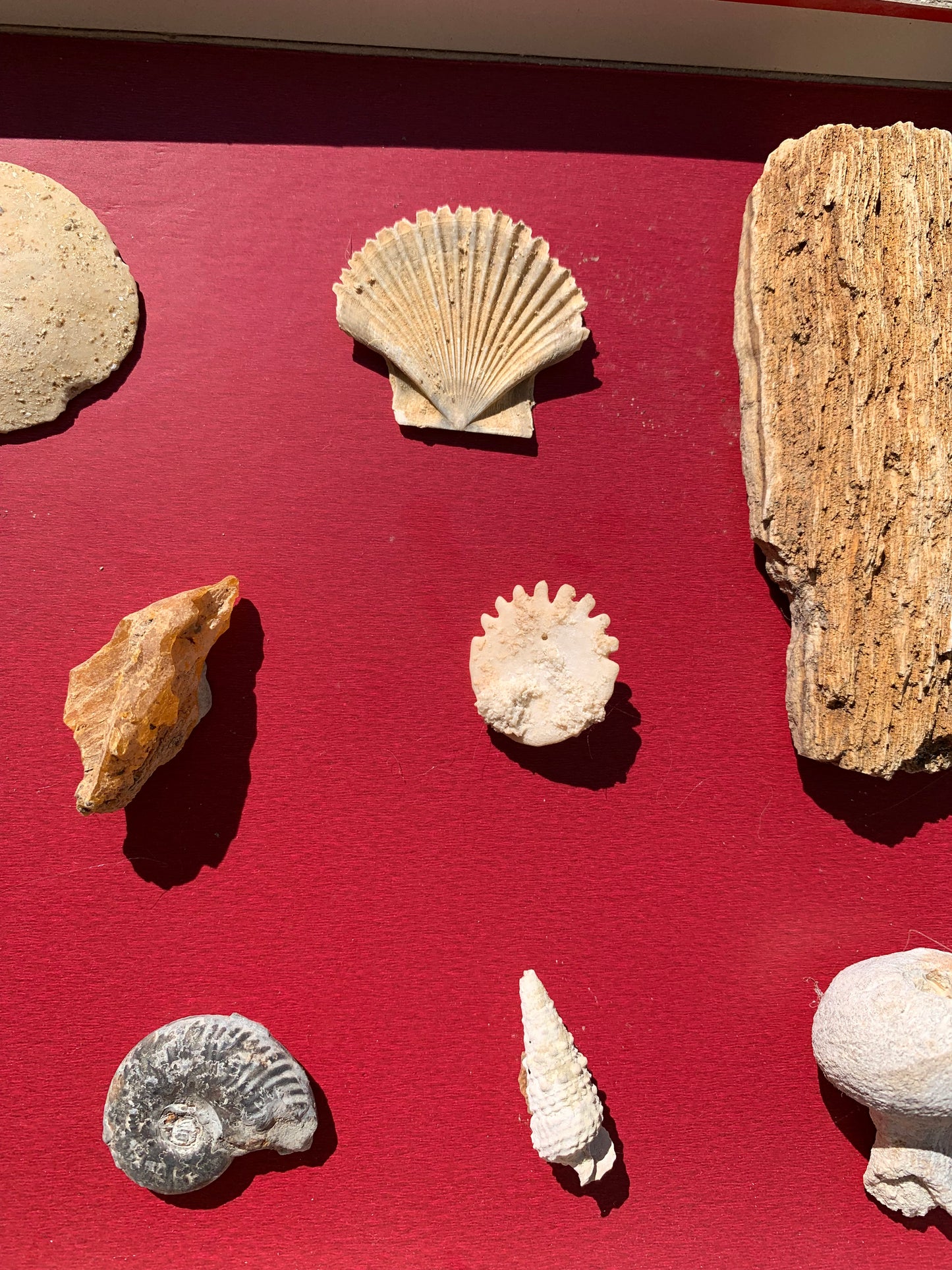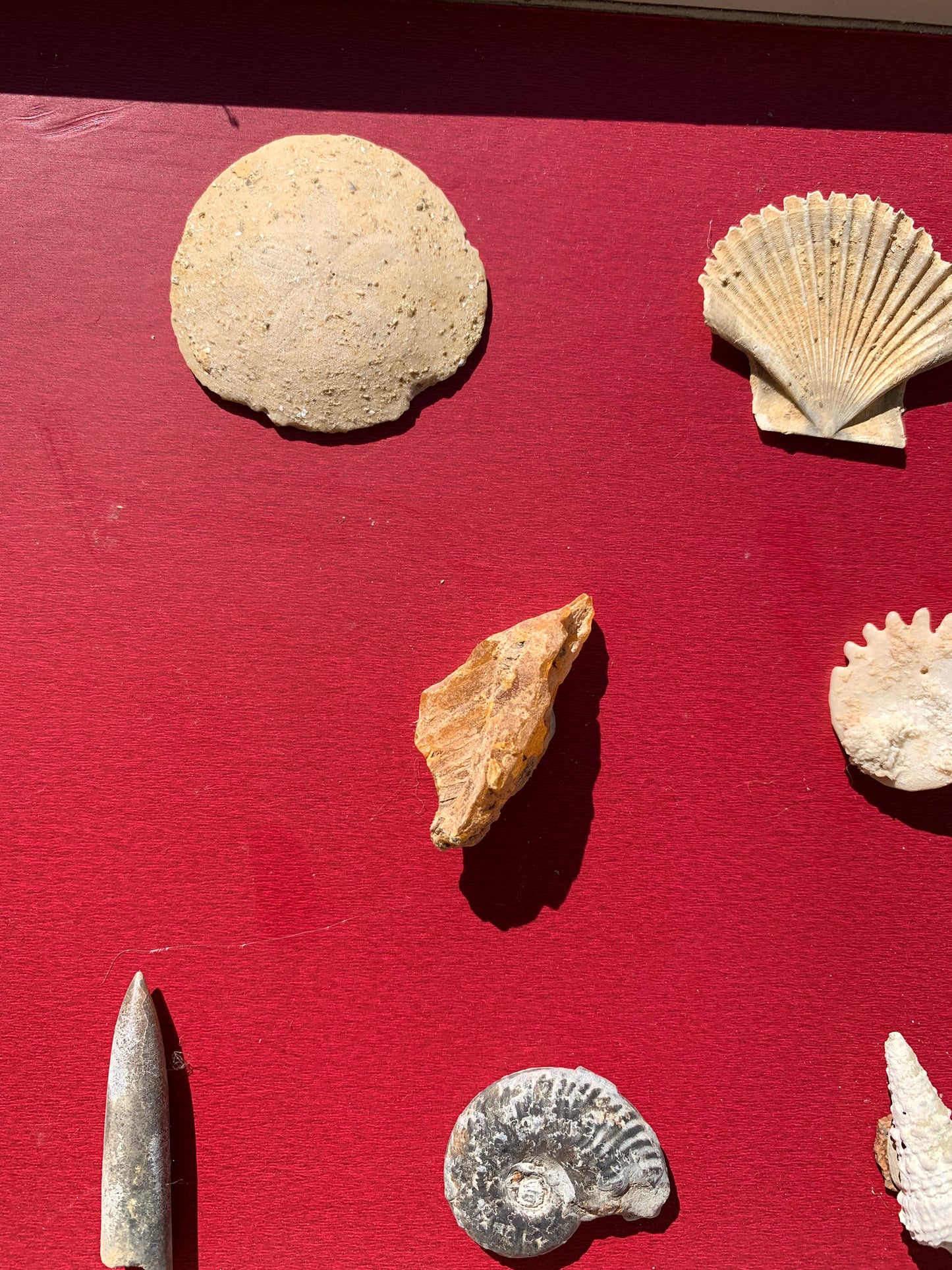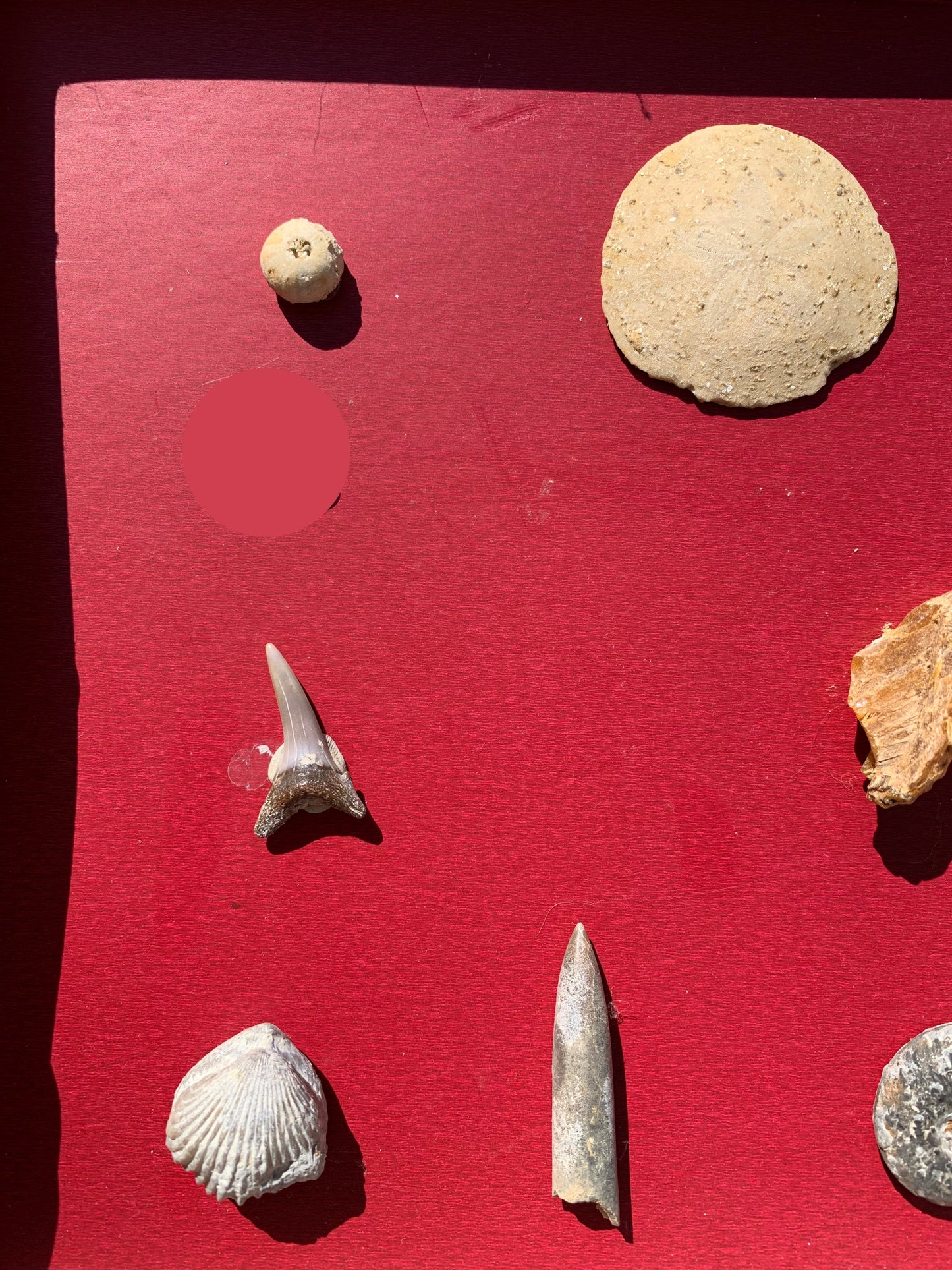Fossils of France, a collection box with a description of 12 pieces. Perfect for collecting, displaying, etc.
Fossils of France, a collection box with a description of 12 pieces. Perfect for collecting, displaying, etc.
Couldn't load pickup availability
- ✧─────✧
About the product:
🪨 Fossil Type: Arbacina / Scutellum / Bivalve Mollusk / Fossil Wood / Odontaspis / Amber / Gastropod / Rhynchonella / Belemnite Rostrum / Ammonite / Eggshell / Siliceous Sponge
🌍 ⛏️ Origin: France (Indre et Loire) except Madagascar amber*
📐 💎 Dimensions: various
⚖️ Weight : miscellaneous
✨ Finish: natural raw
🔬 Treatment: None
🎁 Comes with a Gem and Zen certificate, ideal for giving as a gift or treating yourself!
🦕 Fossils of France – Complete file
🔬 General description
The fossils of France come from very varied geological formations: cliffs of Normandy, Charente, Armorican Massif, Jura, Hérault, Var…
Each fossil bears witness to an ancient marine or terrestrial environment, sometimes several hundred million years old.
| Fossil | Geological age | Type / Biological origin | Main composition | Hardness (Mohs) | Appearance / Particularity |
|---|
| Ammonite | Jurassic (200–145 Ma) | Marine cephalopod, close to the nautilus | Calcite, aragonite, pyrite | 3 to 7 | Coiled spiral, sometimes golden (pyritized) |
| Fossil sea urchin | Cretaceous (145–66 Ma) | Fossil echinoderm (sea urchin) | Microcrystalline calcite | 3 | Rounded shape with star-shaped motifs; lucky stone in Brittany |
| Belemnite | Jurassic & Cretaceous | Marine cephalopod (ancestor of squid) | Calcite | 3 | Elongated cone (rostrum), brown/grey, sometimes translucent |
| Trilobite | Paleozoic (540–250 Ma) | Primitive marine arthropod | Calcite, pyrite, silica | 3 to 7 | Segmented fossil, highly prized in collections (Armorican Massif) |
| Shark tooth | Cretaceous – Miocene (100–5 Ma) | Fossilized remains of sharks (Carcharodon, Lamna, etc.) | Apatite (calcium phosphate) | 5 | Triangular teeth, often black or gray (Hérault, Aquitaine) |
| Fossil wood | Cretaceous – Tertiary | Remains of silicified trunks | Silica (quartz) | 6–7 | Preserved wood texture, brown/red/beige colors (Var, Ardèche) |
| Fossil corals | Devonian – Jurassic | Fossilized marine polyps (coral colonies) | Calcite, aragonite | 3 to 7 | Branched or honeycomb structures, very decorative |
| Brachiopods | Paleozoic – Mesozoic | Marine animals with shells (resemble bivalves) | Calcite | 3 | Domed, striated shells, very common in Normandy and the Jura |
| Crinoids | Devonian – Jurassic | Fossil echinoderms (sea lilies) | Calcite | 3 | Fossils in the form of characteristic segmented stems or “rosettes” |
| Fossil fish | Cretaceous – Eocene (100–40 Ma) | Complete or partial remains of fish | Phosphate, calcite, silica | 3 to 6 | Specimens in limestone slabs (Ardèche, Jura) |
| Fossil Amber | Eocene (approx. 40 Ma) | Fossilized tree resin | Fossilized resin (succinite) | 2–2.5 | Yellow to brown, sometimes with trapped insects |
- ✧─────✧
A question? A comment? | Order and delivery information
A question? A comment? | Order and delivery information
⋯⋯⋯⋯⋯⋯⋯⋯⋯⋯⋯⋯⋯⋯⋯⋯⋯⋯⋯⋯
📞 Customer service available from Tuesday to Saturday , from 10am to 7pm (French time)
- 🇫🇷 From France: 06 51 85 38 18
- 🌍 From abroad: +33 6 51 85 38 18
- 💬 Live chat: via the bubble in the bottom right corner of your screen
- 📧 Email : available 24/7 – we respond quickly!
⋯⋯⋯⋯⋯⋯⋯⋯⋯⋯⋯⋯⋯⋯⋯⋯⋯⋯⋯⋯
🔖 Order today and receive your package within 2 to 10 days depending on your continent.
💳 Secure payment & certified by SSL encryption 🔐
↩️ Returns & exchanges possible within 14 to 30 days after receipt.
🌍 Shipping costs are calculated automatically based on your shipping address at checkout.
📦 Country of shipment: France 🇫🇷
Share
